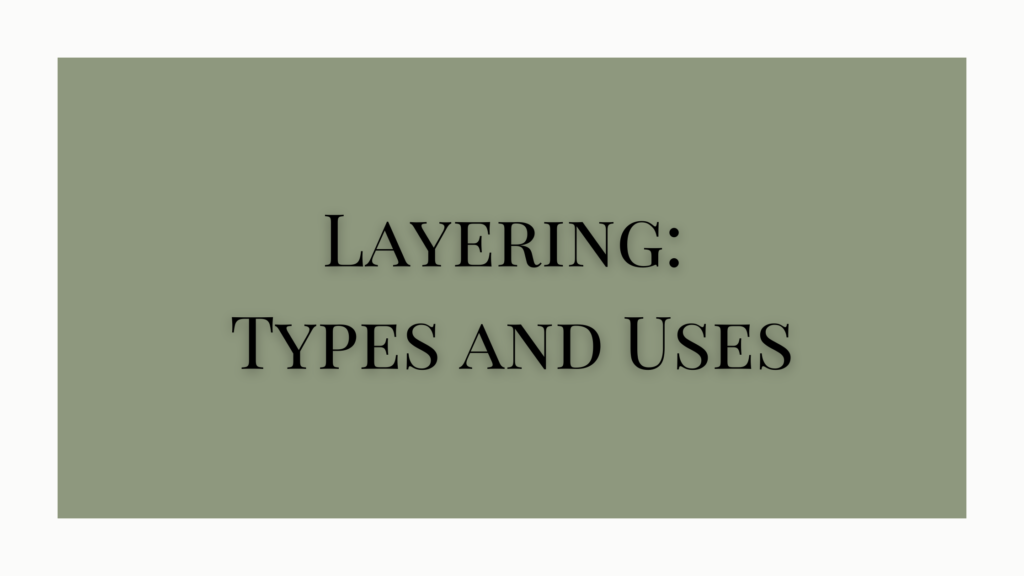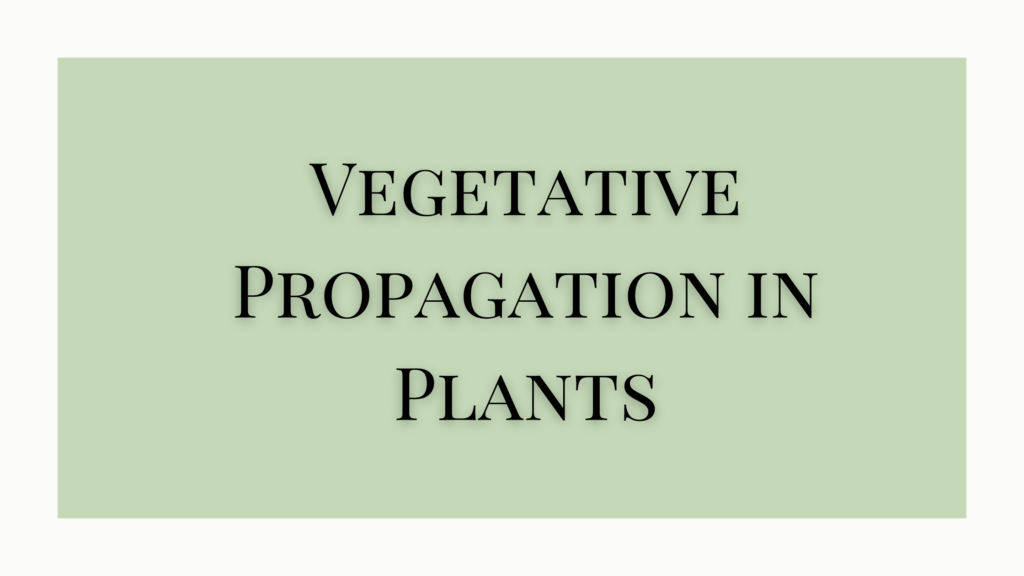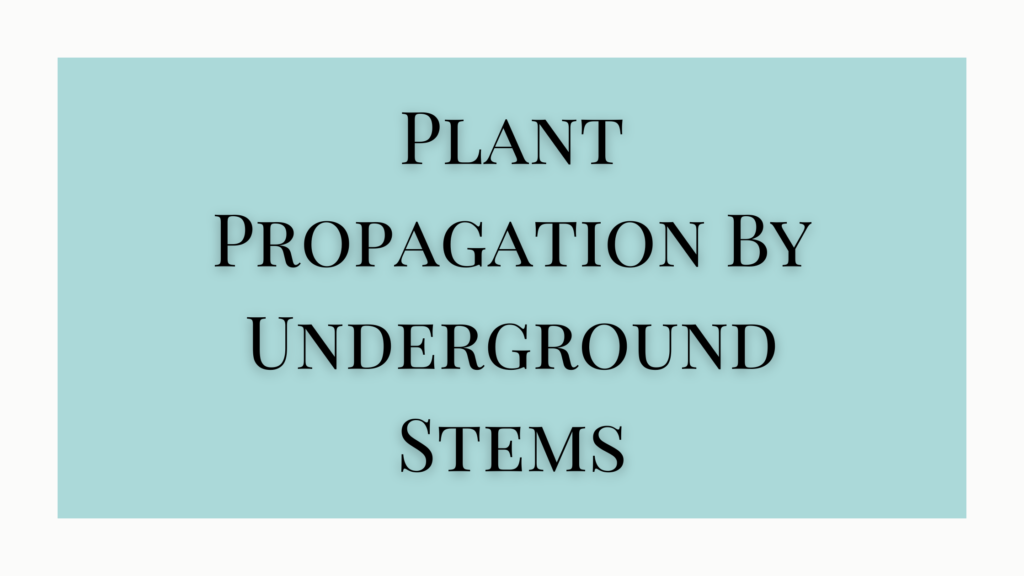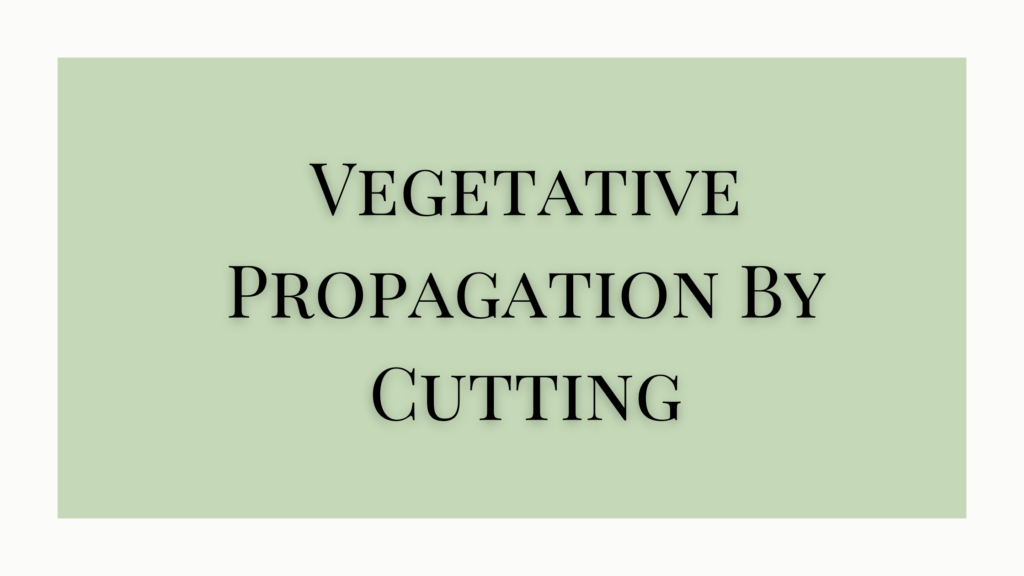Layering Method of Vegetative Propagation
Layering is a propagation method by which adventitious roots are formed on the stem while it is attached to the parent plant. A rooting medium is set around the layered portion to enable the development of roots.
Later, the rooted or layer stem is detached and planted to become a new plant growing on its root. Layering may be regarded as a preparation for subsequent division when the rejuvenated vegetative part is attached to the plant, the process is called layerage. A layered stem is called a layer. It is a simple and effective means of propagation that can be practiced in the field and it requires much labour.
Uses of Layering
- The main advantage of the layering method of vegetative propagation is that it can successfully develop roots on the plants at any desired location.
- It is a simple economical method.
- Layering is best utilized by horticulturists to propagate a relatively small number of plants.
Types of Layering in Plants
Different types of layering methods are followed by propagators.
Tip Layering
In tip layering, rooting occurs near the current season’s tip.s shoot which is bent to the ground. The shoot begins to grow downwards into the soil but recurves to produce a sharp bend in the stem from which roots develop.
This natural method of reproduction is characterized by trailing blackberries. Here, 3-4 deer holes are made near the plant and the tip of the shoot is inserted into the hole and covered with soil.
The tip cannot continue to grow in length and start developing roots. Rooting takes place rapidly and develops a vigorous young vertical shoot as well. The plants are ready for digging by the end of the same season.
Simple Layering
Simple layering is performed by bending the branch to the ground and covering it partially with soil. Here, the terminal portion of the branch is left exposed. A small cut or notch is made on the underside of the node or a small portion of the bark is removed. The injured part is covered with the soil in a pit. A wooden peg is used to hold the layer in place and a vertical wooden stake is used to support the exposed shoot. Eg. Lemon, Magnolia, Jasmine, Guava, etc.
Compound Layering or Serpentine Layering
Compound layering is the same as simple layering except the branch is alternately covered and exposed along its length. Roots develop at each of their buried sections. After rooting, the branch is cut into sections to form new shoot systems with root portions. Eg. Clematis, Jasmine, etc.
Air Layering
Air layering is also known as Chinese layering. Here, a well-matured shoot is selected and a strip of the bark is removed in about 2.5 cm width, 15-20 cm away from the growing tip. The wood should not be injured. The upper ring cut should be near a node to help produce roots.
After cutting the bark, a jute wire is tied around the lower end of the cut portion and covered with a moist rooting medium. Wrap the medium with a piece of polythene sheet and tie both ends tightly.
Rooting will start within 2-3 months. The rooted layer (from the newly formed roots to the tip) is separated and planted to produce new plants.
Air layering is used to propagate several tropical and subtropical plants like Litchi, citrus, Magnolia, Azalea, mango, etc.
Trench Layering
In trench layering, the plants are planted at an angle of 30-40 degrees so that they are somewhat bent. The plant is covered with soil. Due to the incline, axial growth of the shoot does not happen; instead, new shoots are developed from the lateral buds.
This happens along the entire length of the mother plant under the soil. As new plants are developed, pegs are used to keep the plants in the soil. These shoot systems grow roots which can be separated to form individual plants.
During this time, weak branches are removed and soil is also added regularly as needed to cover the bare shoots. By the end of the season, the soil is removed and the rooted layers are taken out and cut into separate plants.
Trench layering is primarily used as a nursery method for propagating certain fruit trees, and rootstocks that are difficult to propagate by other methods. Here, the mother plant is grown for a year in the nursery and then used for trench layering.
Mount Layering or Stool Layering
This is involved in cutting a plant to the ground during the dormant season and mounting the soil around the base of the newly developing shoots in the spring, to encourage root formation. The rooted shoots are separated from the mother plant and planted.
The rooted layers are carefully cut close to their base to maintain the low height of the stool plant. After cutting away the shoots, the mother plant remains exposed until new shoots start growing and they reach a height of 3-5 inches. Once they reach this height, the process is repeated.
A stool bed or plant can be used repeatedly for 15-20 years with proper handling, provided it is maintained in a vigorous condition and control of diseases, insects, and weeds.
References
Additional Reading
- Vegetative Propagation in Plants
- Plant Propagation By Underground Stems
- Vegetative Propagation by Cuttings




